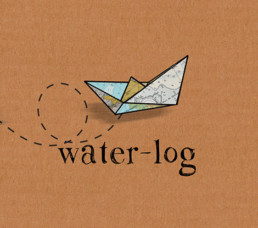You are off the Pacific coast of Nicaragua. The moon is setting. It’s five in the morning the wind is 9 knots from the North West and you have plotted your latest position on the paper chart on the nav-table. You have travelled only seven miles closer to your destination in the last twelve hours. You know there is a little current against you and the small lighthouse to starboard hardly seems to have moved for a day. The forecast is for light winds for the foreseeable future. You left knowing the wind would die and took this in preference to the 50 knot gap winds that kick up in this area between lulls. You are lucky though that the sea is flat. You have a choice, continue tacking up into this mild head wind for the foreseeable future – at this rate you work out that the 120 miles you have left will take you nearly nine days – or you crank up the engine and you will be in in a day.
I am sure you would like to think that we sail everywhere and we would like to believe this ourselves. But it simply isn’t true. The motor is a godsend. However my main problem with the motor is that it costs money to run and that every hour it runs it is getting closer to that inevitable moment when it breaks down beyond my knowledge of fixing it. And then, at that point, we will find out if we can really sail. We are not day-sailing, just deciding to go out when the wind is good. We are passage-making; covering hundreds of miles and sometimes we have to take a mixed bag of a forecast.
Turning to the dark side and motoring is not a simple choice. It’s a definite help but it isn’t a trump card that always pays off. Our motor is only 42 horsepower and our boat is a 42-foot cruiser that requires a lot of momentum to keep her going.
We’ve had occasions where we decide to put the engine on to help with the motion of a sloppy sea state. Other times we use it to motor sail (sails up but engine on) closer to the wind than we would be able to stay if just under sail alone. Or it can be your only line of defense against an adverse running current.
But engines, like all things on a boat, can fail you just when you need them most.
Here are a couple of cases in point. Friends on one boat were 15 miles south of Acapulco, Mexico, their destination after three days at sea. Having been fighting current and a head wind for most of that time they ran out of fuel. They persisted to sail into wind, current and choppy swell but after two days and hardly a mile’s progress they swung the tiller around and they returned to their last port, which they eventually reached seven days after having left it. Pretty soul-destroying stuff.
Around the same time as this other friends of ours were passage-making along the coast of El Salvador and had engine failure. They made every effort to fix it but to no avail. They needed to get to Chiapas in southern Mexico where their boat could be safely and cheaply left over the hurricane season while they flew home. What should have been a two day passage took them 16 days as they had both wind and current pushing them back. On one particular day they went backwards for twenty miles.
They were quite nonchalant when we caught up with them a couple of days later. Having not provisioned for so long a passage but managing to make it work they now feel quite ready for an ocean crossing. Which, to be honest is a lot more straightforward than coastal sailing.
In the end there is no question, one just has to motor in this neck of the woods. Do the maths, work out your fuel budget and if you really do need to head north up the coast of Pacific Central America at this time of year accept that this is the only way – under engine.
